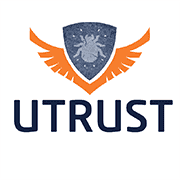Strategies to Optimize Software Testing Costs
Software testing is a pivotal phase in the software development lifecycle, guaranteeing the quality and reliability of the final product. Despite its importance, testing activities can sometimes be perceived as time-consuming and expensive. In this discussion, we will delve into effective strategies to reduce costs while conducting software testing, allowing organizations to streamline their testing processes without compromising on quality.
Prioritizing Testing Efforts
Different features and functionalities in a software application do not all require the same level of testing. By prioritizing testing efforts based on criticality and impact, organizations can allocate resources more efficiently. Emphasizing testing on core functionalities and areas likely to affect end-users allows for targeted testing, saving time and effort on non-essential areas.
Embracing Test-Driven Development (TDD)
Test-Driven Development (TDD) is an agile approach that stresses writing tests before the actual code. Following TDD helps developers spot potential issues early in the development phase, reducing the need for extensive testing later on. This proactive method not only saves time but also minimizes the cost of rectifying defects in subsequent stages.
Leveraging Test Automation
Automation plays a pivotal role in reducing costs in software testing. By automating repetitive and time-consuming test cases, organizations can significantly cut down the resources and effort required for testing activities. Automated tests can be executed repeatedly, ensuring consistent results and allowing manual testers to concentrate on more complex scenarios. Investing in robust test automation frameworks and tools maximizes cost savings.
Adopting Risk-Based Testing
Risk-based testing involves identifying and evaluating potential risks associated with the software application. By conducting a comprehensive risk analysis, organizations can tailor their testing efforts to mitigate the highest priority risks. This approach enables efficient resource allocation and prioritization of test cases, minimizing unnecessary testing in low-risk areas and aligning testing efforts with critical aspects of the software.
Optimizing Testing Environments
Developing and maintaining testing environments can be expensive. To cut costs, organizations can optimize their testing environments by utilizing virtualization and cloud-based solutions. Virtual environments allow quick provisioning and configuration of multiple test environments without the need for costly physical hardware. Cloud-based testing platforms offer scalability, flexibility, and cost-effectiveness through on-demand resources for testing activities.
Implementing Continuous Integration and Continuous Testing
Continuous integration and continuous testing practices streamline the testing process and reduce costs. By integrating testing early and frequently into the development cycle, organizations can identify defects early on, reducing the effort needed for bug-fixing later. Continuous testing aids in maintaining a stable codebase, minimizing the risk of costly rework and regression issues.
Considering Outsourcing and Crowdsourced Testing
Organizations can consider outsourcing non-core or specialized testing activities to third-party vendors or leveraging crowdsourced testing platforms. Outsourcing provides cost advantages by accessing testing professionals’ expertise without full-time resources. Crowdsourced testing enables organizations to tap into a diverse pool of testers offering valuable feedback at a lower cost compared to maintaining an in-house testing team.
In conclusion, software testing is indispensable for delivering high-quality software products without excessive costs. By implementing these cost reduction strategies—prioritizing testing efforts, automation, risk-based testing, optimized testing environments, continuous testing practices, and considering outsourcing—organizations can optimize their testing activities while upholding quality standards. With meticulous planning and strategic execution, organizations can achieve cost savings while ensuring a robust and dependable software application.
Comments are closed.





